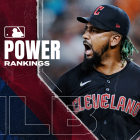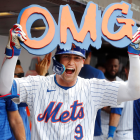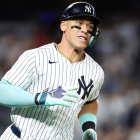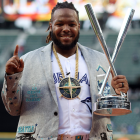The story of the 2017-18 offseason has been the dawdling nature of it -- suspiciously dawdling, some would argue. At this writing, we're less than a fortnight from pitchers and catchers reporting to spring training, and the wide majority of premium free agents remains unsigned. Given the full light of owner-player relationships in the free-agent era -- i.e., 1976 onward -- it's no great leap to assume double dealing on the part of clubs. To be sure, there's no hard evidence teams are colluding against free agents right now, but it's happened repeatedly in the past.
The likelihood is that it's an array of factors tamping down the free-agent market -- homogeneity when it comes to the way front offices value players, a somewhat uninspiring class of free agents, financial restraints built into the new Collective Bargaining Agreement (CBA), a perhaps inordinate number of rebuilding teams, and the plausible notion that teams in the current era of media rights and related properties don't need to an invigorated fan base in order to make money among them. That said, it's very much within the range of possibilities that clubs are acting concertedly to depress the free-agent market.
None of this is tantamount to a credible accusation about MLB or its teams, but there's enough noise to justify an exploration of the history and meaning of collusion when it comes to free agents in baseball. Regarding that trending topic, here's what you need to know:
The CBA defines collusion and forbids it
The CBA is the negotiated agreement that governs the working relationship between players and teams. Speaking of which, Article XX-Section B of the 2017-21 CBA addresses the agreed-upon free agency structure. Within that section, you also find this:
E. Individual Nature of Rights
(1) The utilization or non-utilization of rights under Article XIX(A)(2) and Article XX is an individual matter to be determined solely by each Player and each Club for his or its own benefit. Players shall not act in concert with other Players and Clubs shall not act in concert with other Clubs.
"Acting in concert" is the defining phrase here. On the team side, it's in essence a form of bid suppression. This would take the form of, say, teams' being directed by the commissioner to restrain their efforts to sign free agents and -- to that end -- teams' sharing information about offers to free agents. That's a collective action designed to corrupt the free-agent market, and that's collusion. Collusion has been in violation of the CBA since at least the 1980-83 Basic Agreement.
The mid-1980s saw a defining example of team collusion against free agents
Roughly 10 years after the famed "Seitz Decision" greased the skids for free agency in MLB, owners took a reactionary tack in response to rising player salaries. Even though then-union head Marvin Miller was raising concerns about collusion as early as 1982 in a Congressional testimony, it wasn't until the mid-1980s that things took an actionable turn.
For three successive offseasons (1985-86, 1986-87, and 1987-88), teams colluded to artificially depress the free-agent market. The origins are hard to pin down, but then commissioner Peter Ueberroth chaired a September 1985 meeting in Itasca, Illinois, to address the rising costs of player development. The very next month Lee MacPhail, the powerful and outgoing director of the Player Relations Committee (PRC) dispensed a memo to owners in which he forcefully argued against long-term contracts for players. In the coming weeks and months, Ueberroth regularly hectored owners about their spending habits and stumped for MacPhail's conclusions. In John Helyar's seminal account of the business history of baseball, Lords of the Realm, Ueberroth is quoted as telling the assembled owners during the 1985 World Series, "You all agree we have a problem. Go solve it." For his part, Ueberroth would deny saying this. Whatever the truth, the message in some form or fashion was communicated quite effectively.
The first sign was perhaps that following the '85 World Series, profligate "sporting gentleman" owners like George Steinbrenner and Ted Turner were uncharacteristically unwilling to spend money in pursuit of championships. If those two weren't spending, then no one was. Closer Donnie Moore -- coming off a season in which he authored a 1.92 ERA in 103 innings and finished sixth in the AL MVP balloting -- received but two offers: one from his former team the Angels and one from a club in Japan. Catcher Steve Yeager after being frozen out of the market actually opted out of free agency and was promptly traded for (i.e., teams wanted him, just not in a free-market-ish setting). The Royals heavily courted Kirk Gibson (a hunting trip with team owners, for instance), one of the most coveted of free agents that winter, and then suddenly stopped. The New Year came and went, and no free agent had received an offer from any team other than the one he played for in 1985. The class included the likes of not only Moore, Yeager, and Gibson, but also Rod Carew, Carlton Fisk, Don Sutton, Bobby Grich, Phil Niekro, and Tommy John. In the end, only one free agent, Fisk, received a competitive offer from a team other than his 1985 club.
That wasn't all. In September of 1987, owners established the Information Bank. Teams making free agent offers would report the terms of the offer to the PRC, which allowed teams pondering a free agent offer to tap into the Bank and find out what offers (if any) that player had already received. Obviously, this eliminated any possibility of market-driven overbidding and served to suppress salaries.
Free agents remained frozen out for the '86-'87 and '87-'88 offseasons. The absurdities culminated with Andre Dawson -- wanting out of Montreal but colluded against on the market -- sending the Cubs a blank contract for them to fill in. Outflanked on the public-relations front, Cubs president Dallas Green gave Dawson a base salary of $500,000, or roughly half of what he made the previous year. Dawson would win the NL MVP Award that season.
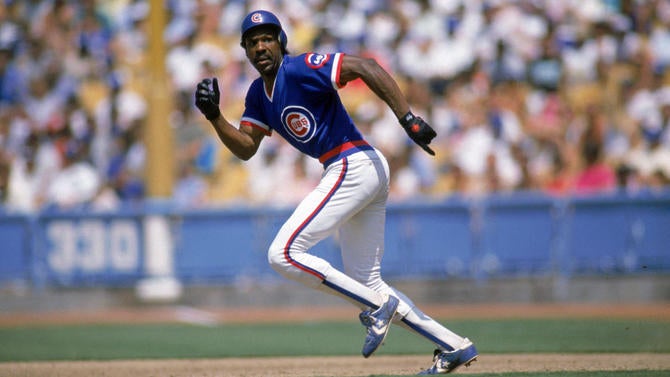
The owners paid dearly for their behavior
Beginning in February of 1986, the MLBPA filed the first of three grievances (titled Collusion I, II, and III) in which they eventually charged 26 teams with collusion against free agents. The owners countered that the declining market was "nothing more than the culmination of a predictable evolution to a more sober and rational free-agent market."
Neutral arbitrator Thomas Roberts, after reviewing more than 5,000 pages of documentation, eventually ruled against the owners and found that they had indeed colluded against free agents. Owners promptly fired Roberts as arbitrator, but his gavel had already fallen.
The new arbitrator, George Nicolau, proved no friendlier to the owners' interests, as he ruled in favor of the players in Collusion II and Collusion III. In his Collusion II ruling, Nicolau noted that White Sox owner Jerry Reinsdorf and then Brewers owner Bud Selig had taken the unusual step of trying to persuade the Phillies not to sign Tigers catcher Lance Parrish on grounds of "fiscal responsibilities."
Early in 1988, Nicolau also ruled for the players in Collusion III. That meant that, per the arbitrator's findings, owners had acted as one to illegally suppress the free-agent market for three consecutive offseasons. It wasn't until late 1990 that the owners and players agreed upon compensation for the clubs' malfeasances -- $280 million plus interest and distribution costs. The final tab would be $434 million. How did owners pay for this? They expanded, in rapid succession and perhaps unwisely, into Denver, Miami, Phoenix, and Tampa, thus reaping expansion fees from those new ownership groups.
The owners tried to legalize collusive behavior
What's a rational if cynical response to being sanctioned for collusion against free agents? Make it allowable conduct, obviously. In February of 1995 -- i.e., deep in the wild heart of the 1994-95 labor stoppage/meltdown -- the owners agreed to pull from the negotiating table their demands for a salary cap but they unilaterally struck down the provisions against collusion. The National Labor Relations Board filed a complaint soon thereafter, and eventually federal judge Sonia Sotomayor restored the terms of the prior CBA. The owners' effort to systematize collusion didn't work, but that same effort reminded us how important it was to them.
Owners would possibly collude again
In October of 2006 the owners once again settled a collusion claim, this time before it made it to arbitration. Per the agreement, the owners settled Collusion IV by paying the MLBPA $12 million but did not have to admit guilt. As well, the MLBPA in May of 2008 asked then commissioner Bud Selig to investigate the possibility that teams were colluding to in essence "blackball" Barry Bonds following a 2007 season in which he put up an OPS+ of 169, hit 28 home runs in 126 games, and led the majors in on-base percentage. As well, Scott Boras posited that team were similarly colluding against his free agent, Alex Rodriguez, who eventually re-signed with the Yankees.
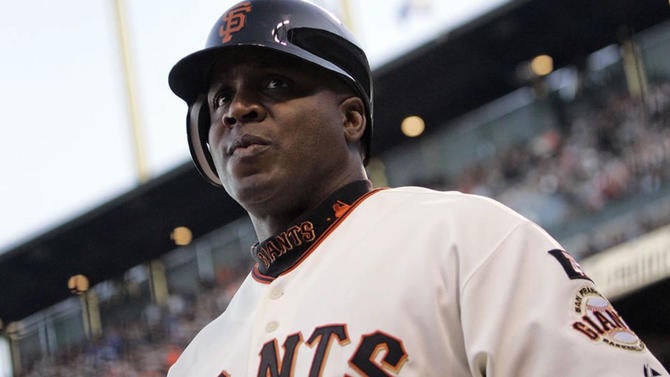
With regard to Bonds, here's a perhaps telling passage from Marc Edelman's research article, "Moving Past Collusion in Major League Baseball: Healing Old Wounds and Preventing New Ones":
When asked why there was such a lack of interest in Bonds throughout Baseball, reporters received little meaningful response. When one reporter asked Assistant General Manager and Harvard University graduate David Forst why the Oakland Athletics were not interested in Bonds, Forst responded by asking the reporter, "[Do you] expect me to answer this on the record?"
In the end, though, arbitrator Frederic Horowitz ruled against Bonds and for MLB in Collusion V.
The MLBPA may have extra motivation to pursue a collusion case in 2018
We're light on hints and allegations when it comes to official MLBPA mouthpieces. Bear in mind, though, that in Collusion IV the evidence against the owners was never made public because the case never went to arbitration. Said evidence, however, was sufficient to motivate the owners to settle. The MLBPA at least once upon a time was capable of doing its own fact-finding and undertaking "forensic accounting" in order to build a case. Just because union head Tony Clark hasn't seized the talking stick and accused the owners of collusion doesn't mean the players' side isn't performing its due diligence.
Speaking of which, the players may have a little extra incentive to turn over every relevant stone. Here's a passage of note from, once again, Section XX of the current CBA ...
(5) In addition, upon any finding by the Arbitration Panel of a violation by five (5) Clubs or more of Section E(1) of this Article XX, the Association shall have the right to reopen this Agreement upon sixty (60) days written notice to the LRD.
Section E(1) is the part that deals with collusion in free agency. The "Agreement" is the CBA, and the above says that if five or more teams are found to have colluded, then the MLBPA may reopen the CBA. That's significant because the MLBPA, during the last round of CBA negotiations, appears to have misplayed its hand. It should've angled for fundamental changes to the free-agent market (meaning, mostly, it should have pressed for earlier free agency) as a response to the evolving economic landscape. It didn't do that. It should've bargained hard for a significantly higher minimum salary and for players to receive something closer to market value during their team-control years. It didn't do that. Some agents recognized this as a mistake at the time, and the way the 2017-18 offseason has unfolded has greatly reinforced the idea that the MLBPA badly misallocated its bargaining capital this time around. Proved collusion on the scale of five teams would in essence allow them a do-over.
In other words, if the MLBPA can build a case for collusion, then they should be hellbent on doing just that. Whether they can and, more importantly, whether it's actually occurring right now is something for time and vested parties to sort out.
Sources: The 2017-21 Collective Bargaining Agreement; The Business of Major League Baseball by Gerald W. Scully; Cot's Baseball Contracts; "Moving Past Collusion in Major League Baseball: Healing Old Wounds and Preventing New Ones" by Marc Edelman, Wayne Law Review, Vol. 54, No. 3, 2008; Lords of the Realm by John Helyar










